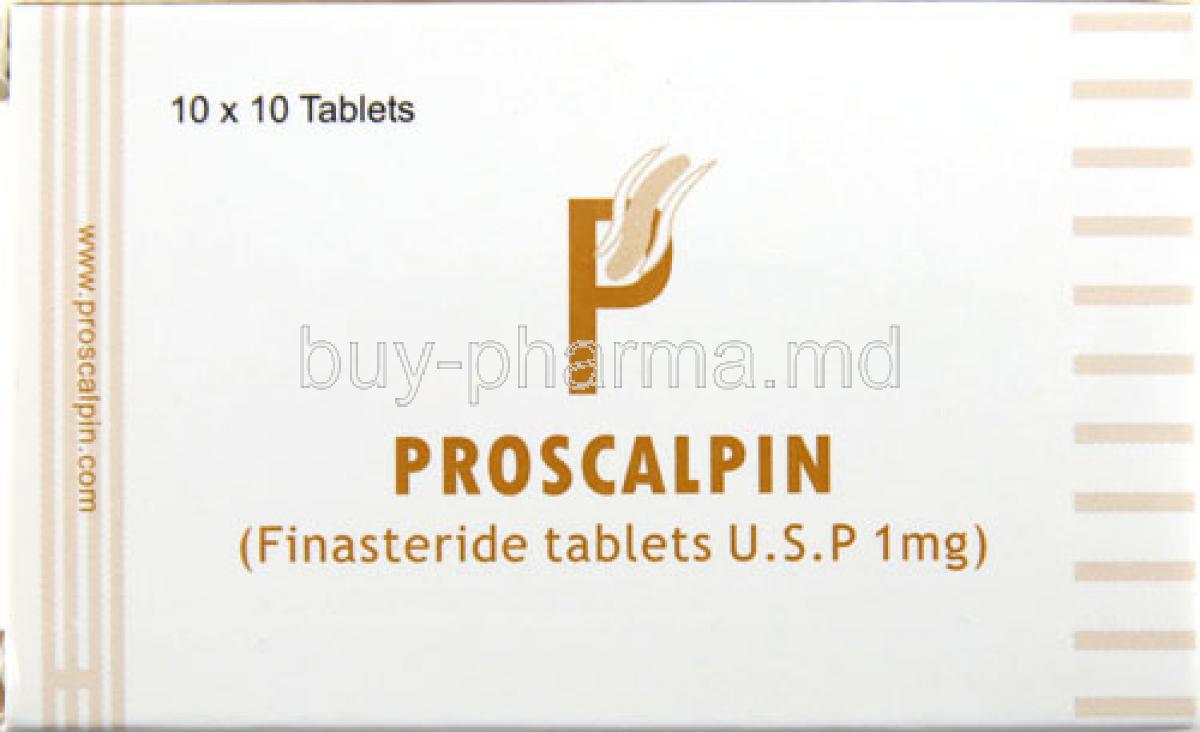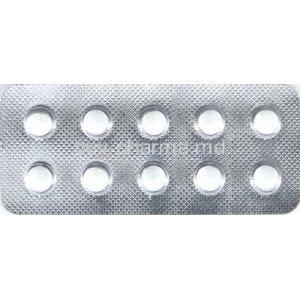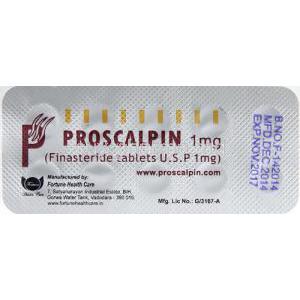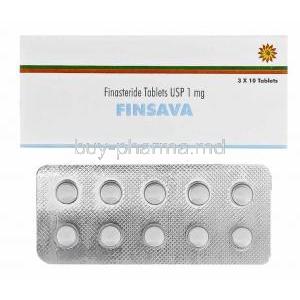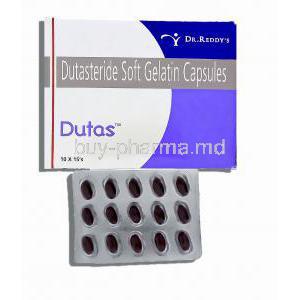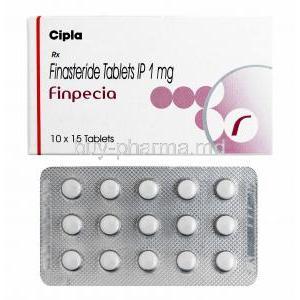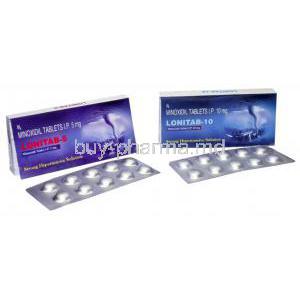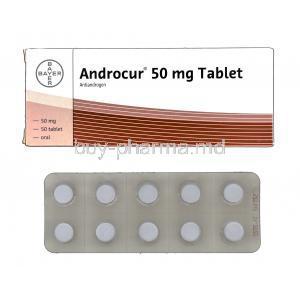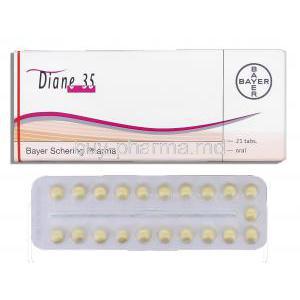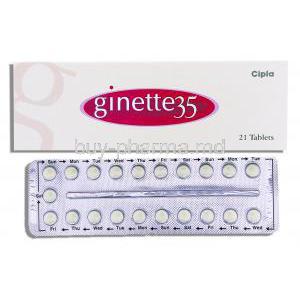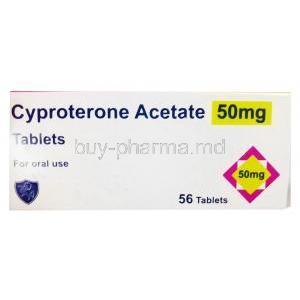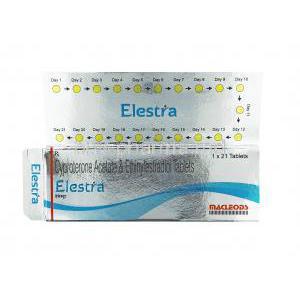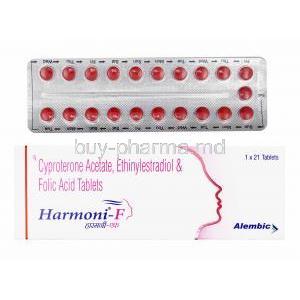Proscalpin, Finasteride
- What is Proscalpin (Finasteride)
- Uses of Proscalpin (Finasteride)
- How Proscalpin (Finasteride) Works
- Dosage and Administration
- Composition of Proscalpin
- Side Effects of Proscalpin (Finasteride)
- Serious Side Effects
- Interactions with Other Medications
- Warnings and Contraindications
- Careful Administration and Monitoring
- Important Precautions
- Administration to Elderly
- Overdosage of Proscalpin
- Storage
- Handling Precautions
- Discontinuation Effects
What is Proscalpin (Finasteride)
Overview of Proscalpin
Proscalpin, a known name in pharmaceuticals, represents an effective solution for treating androgenetic alopecia. It is made with finasteride as the ingredient, and Proscalpin brings hope to those struggling with hair loss. This medication works by blocking the conversion of testosterone to dihydrotestosterone (DHT), a hormone that causes hair follicles to shrink and leads to hair thinning.
- Type: Tablets taken orally
- Primary Purpose: Addressing male pattern baldness
- How It Works: Blocks DHT production Proscalpin is a trusted companion for individuals looking to restore their hair and regain self-assurance.
.png)
Introduction to Finasteride
Proscalpins' main ingredient, Finasteride, is a player in managing conditions affected by DHT as it inhibits 5 alpha-reductase. Originally developed for treating prostatic hyperplasia (BPH), the unexpected benefit of hair regrowth led to its use in addressing male pattern baldness. The unique molecular structure of Finasteride enables it to target enzymatic pathways involved in DHT production, protecting hair follicles from its harmful effects.
- Chemical Composition: (Dimethylethyl) 3 oxo 4 aza 5α and rost 1 ene 17β carboxamide
- Dosage Forms: Typically prescribed as 1 mg for hair loss and 5 mg for BPH treatment
- Efficacy: Supported by findings from various clinical studies, Finasteride's precise mechanism of action highlights its significance in urological and dermatological treatments.
Brief History and Development
The origin story traces back to the late 20th century when Merck & Co. Took the lead in its development. Initially known as Proscar for addressing BPH in 1992, the unexpected discovery of its impact on hair growth led to exploration. In 1997, the FDA approved Finasteride under Propecia to combat pattern baldness. This significant achievement marked a chapter in dermatology by emphasizing hormonal regulation as a pivotal aspect of treating hair loss.
Key Achievements:
- 1992: FDA clearance for BPH treatment
- 1997: FDA authorization for alopecia
- 2006: Introduction of generic alternatives The transformation of Finasteride from a medication for prostate issues to a solution for hair loss highlights the evolving landscape of pharmaceutical advancements, showcasing how one molecule can reshape various aspects of human well-being.
Uses of Proscalpin (Finasteride)
Primary Uses
Proscalpin, a regarded medication containing Finasteride, is used for various therapeutic purposes. It mainly targets conditions caused by the hormone dihydrotestosterone (DHT). By blocking the enzyme 5 alpha-reductase, Proscalpin reduces the conversion of testosterone to DHT, thus lessening its impact on the body.
- How it works: By inhibiting 5 alpha reductase
- Effect: Decreased levels of DHT
- Advantages: Helps relieve symptoms linked to DHT-related conditions. Its main uses cover skin and urinary issues, showcasing its versatility and effectiveness.
Treatment of Male Pattern Baldness (Androgenetic Alopecia)
Male pattern baldness, also known as alopecia, is a common issue that Proscalpin is often prescribed for. This condition, characterized by hair thinning and receding hairlines, impacts many men.
- Signs: Hairline moving back, thinning on the top of the head
- Effectiveness: Scientifically proven to help with hair growth and slow down hair loss
- Usage: Typically taken as a 1 mg tablet daily
With regular use, Proscalpin can make a noticeable difference in hair thickness and overall scalp coverage, restoring confidence and enhancing one's appearance.

Management of Benign Prostatic Hyperplasia (BPH)
Proscalpin plays a role in treating benign prostatic hyperplasia, a condition characterized by the noncancerous enlargement of the prostate gland. Symptoms of BPH may include challenges with urination, such as urges, weak urine flow, and nighttime visits to the bathroom.
- Common Signs: Frequently needing to urinate, trouble initiating or maintaining urination, waking up at night to urinate
- How It Works: Proscalpin reduces prostate size by decreasing DHT levels
- Recommended Dosage: Typically prescribed as a 5 mg tablet once daily
By reducing the size of the prostate, Proscalpin helps alleviate obstructive symptoms, leading to improved urinary flow and enhancing the quality of life for individuals affected by this condition.
Off-label Uses
Treatment of Female Pattern Hair Loss
Although not officially approved for this purpose, Proscalpin has been used off-label to address pattern hair loss, a condition that resembles male pattern baldness and involves thinning of hair throughout the scalp, especially along the part line.
- Signs: Thinning of hair over noticeable widening of the part line
- Effectiveness: Positive results observed in clinical trials
- Considerations: Regular monitoring is necessary due to potential side effects
Women dealing with androgenetic alopecia may experience significant hair regrowth and improved hair texture by using Proscalpin.
Prostate Cancer Prevention
Recent studies indicate that Finasteride might have a role in decreasing the likelihood of developing prostate cancer. By reducing DHT levels, which are linked to prostate cancer development, Proscalpin could present an option.
- Research: investigations into potential preventive advantages
- Potential Impact: Lower occurrence of prostate cancer
- Dosage: Various investigational guidelines exist
Although further evidence is necessary, Proscalpin's potential in this area shows promise.
Hormone Therapy in Transgender Women
For women, Proscalpin is occasionally used in hormone therapy to lessen the effects of male hormones. Its role in lowering DHT levels aids in diminishing masculine traits and promoting a feminine look.
- Purpose: Included in gender-affirming hormone treatment
- Advantages: Decreases facial and body hair growth, supports breast development
- Administration: Tailored according to individual treatment strategies
This utilization highlights the applications of Proscalpin in treating various health conditions beyond its initial purposes.
How Proscalpin (Finasteride) Works
Mechanism of Action
Proscalpin, which contains the ingredient Finasteride, works by targeting a specific mechanism with precision. Its main function is to inhibit the 5 alpha reductase enzyme, which plays a role in converting testosterone to dihydrotestosterone (DHT). This process serves as the basis for its effectiveness in treating conditions.
- Target: 5 alpha reductase enzyme
- Action: Blocking DHT production
- Result: Decreased effects
This blocking action supports Proscalpin's ranging therapeutic advantages, which include promoting hair growth and reducing prostate size.
Inhibition of 5-alpha-reductase
The importance of Proscalpin's ability to block 5 alpha reductase cannot be overstated. This enzyme comes in two forms, type I and type II, crucial for converting testosterone into the androgen hormone known as DHT. Unlike type I, which is not impacted by Finasteride, the drug selectively inhibits the type II form, primarily found in hair follicles and the prostate.
- Forms: Type I and Type II
- Targeted Inhibition: Type II 5 alpha-reductase
- Focus: Hair follicles and prostate tissue
Targeting this enzyme Proscalpin effectively lowers DHT levels thereby reducing its negative impact, on these tissues.
Impact on Dihydrotestosterone (DHT) Levels
DHT, a hormone, plays a crucial role in causing both male pattern baldness and enlarged prostate. High levels of DHT can lead to hair follicle shrinkage and prostate growth. Proscalpin reduces DHT production, effectively lowering its presence in the scalp and prostate.
- DHT Function: Causes hair loss and prostate enlargement
- Reduction: Marked decrease in DHT levels with treatment
- Effectiveness: Clinically proven reduction in trials
Reducing DHT levels can help alleviate symptoms and support hair growth and prostate health.
Biological Effects
Hair Follicle Stimulation
The impact of Proscalpin on hair follicles is significant. By decreasing DHT levels, Finasteride stops the shrinking process of hair follicles, a characteristic of androgenetic alopecia. This interruption allows for the rejuvenation and growth of hair.
- Shrinking: Process stopped by reducing DHT
- Growth: activity and density of hair follicles
- Result: Enhanced hair thickness and coverage
Patients often notice a visible enhancement in hair thickness and scalp coverage when using Proscalpin consistently.
Prostate Size Reduction
In the context of a prostate, Proscalpin's effect on DHT levels results in a decrease in the size of the gland. DHT is responsible for the growth of prostate cells, which ultimately leads to the enlargement of the gland. By reducing DHT production, Finasteride triggers a decrease in prostate volume.
- Cell Growth: Diminished due to decreased DHT levels
- Prostate Size: Marked decrease with treatment
- Symptoms: Relief from blockage and improved urine flow
This shrinkage in prostate size eases symptoms related to benign prostatic hyperplasia, improving urinary function and enhancing patient well-being.
Dosage and Administration
Recommended Dosage for Male Pattern Baldness
Individuals experiencing pattern baldness are advised to take 1 mg of Proscalpin (Finasteride) daily. This dosage has been scientifically proven to help with hair growth and stop hair loss.
- Dosage: 1 mg per day
- Form: Tablet for consumption
- Duration: Use regularly for best results
Consistency is crucial in achieving and preserving the desired hair thickness and scalp coverage results.
Recommended Dosage for Benign Prostatic Hyperplasia
When treating prostatic hyperplasia (BPH), doctors usually suggest a higher dose of Proscalpin, with patients commonly taking 5 mg each day. The medication comes in tablets and is typically used for an extended period, often lasting months or even years. This dosage has been found to decrease prostate size and help relieve urinary symptoms linked to BPH.
Administration Guidelines
With or Without Food
Patients can take Proscalpin with or without food, allowing them to choose. The medication's absorption and effectiveness remain unchanged whether taken with a meal or on an empty stomach.
- Food Preference: Optional
- Absorption Rate: Not influenced by food
- Ease of Use: Suitable for consumption during meals or when fasting
Individuals can easily include Proscalpin in their daily schedule without concerns about when they eat.
Optimal Timing and Frequency
To get the results from Proscalpin, it's essential to take it every day simultaneously. This helps keep a level of Finasteride in your system.
- How: Once a day
- When: Pick a time and stick to it
- Why it matters: Keeps drug levels steady for better effectiveness
It is recommended that patients pick a time that works well with their daily routine in the morning or evening to make it easier to remember and follow the treatment plan.
Composition of Proscalpin
Active Ingredients
Proscalpins' main ingredient, Finasteride, is an inhibitor of 5 alpha-reductase. This substance is responsible for the positive effects seen in treating androgenetic alopecia and benign prostatic hyperplasia.
- Main Component: Finasteride
- Chemical Structure: C23H36N2O2
- Purpose: Prevents the conversion of testosterone to dihydrotestosterone (DHT)
The specific effect of Finasteride on the process is crucial in managing conditions influenced by high DHT levels.

Inactive Ingredients
Proscalpin includes inactive ingredients that help maintain the medication's stability, effectiveness, and ease of production. These additional substances preserve the tablet's structure, aid in absorption, and improve patients' adherence to the treatment.
- Lactose Monohydrate: Serves as a filler and stabilizer
- Microcrystalline Cellulose: Adds bulk to the tablet and assists in compression
- Pregelatinized Starch: Aids in the breakdown and dissolution of the tablet
- Sodium Starch Glycolate: Functions as a disintegrant
- Magnesium Stearate: Works as a lubricant during tablet preparation
These inactive elements ensure that each Proscalpin dose consistently provides its intended benefits.
Formulations Available
Proscalpin comes in tablet form for intake. The tablets are made in strength to treat various conditions.
- Type: Oral tablets
- 1 mg Tablets: Often used for treating androgenetic alopecia
- 5 mg Tablets: Typically prescribed for benign prostatic hyperplasia
Every tablet formulation is carefully crafted to deliver accurate doses and effective absorption, offering patients a dependable treatment choice for their specific health issues.

Side Effects of Proscalpin (Finasteride)
Overview of Side Effects
Proscalpin (Finasteride) is usually well tolerated; however, like any medication, it can cause side effects for some people. These unwanted reactions can range from mild to severe, depending on how each person reacts to the medicine. Patients and healthcare providers must understand these side effects to handle and minimize any adverse effects effectively.
- Occurrence: Varies from person to person
- Intensity: mild to moderate
- Handling: Regular monitoring and discussions with healthcare professionals
Knowing these side effects enables timely intervention and the implementation of suitable management strategies.

Common Side Effects
Commonly, when using Proscalpin, people may experience side effects that often occur at the beginning of treatment and may lessen as the body gets used to the medication. These usual side effects include:
- Feeling dizzy
- Having headaches ranging from mild to moderate
- Experiencing weakness or fatigue
- Developing a skin rash.
Fortunately, many of these side effects are temporary. Usually, they go away on their own without requiring medical treatment.
Sexual Dysfunction
Many patients who use Proscalpin are worried about experiencing problems. This includes issues that can impact their sexual health and performance. The frequency and seriousness of these side effects may differ.
- Frequency: Not common but worth noting
- Forms: Loss of interest in sex, trouble getting or maintaining an erection, and difficulties with ejaculation
- Approach: Patients should discuss with healthcare providers to explore other treatment options or supportive therapies
Knowing about the possibility of sexual issues is essential for patients to make informed decisions and stay informed.
Decreased Libido
One common issue that people often mention when taking Proscalpin is a decrease in their desire. This could mean they feel less interested in engaging in activities, which might affect their overall quality of life.
- Signs: Loss of interest in activities
- Duration: May last during treatment
- Effect: Could impact personal relationships
Individuals facing a drop in libido should talk to their healthcare provider about potential solutions or changes to their treatment plan.
Erectile Dysfunction
Dealing with dysfunction, which is a notable side effect, means struggling to achieve or keep an erection suitable for fulfilling sexual activity. This issue can be quite troubling for individuals.
- Indications: Challenges in achieving or sustaining an erection
- Occurrence: Varies from person to person
- Management: Might involve the use of medications or therapeutic measures
It is essential to tackle erectile dysfunction to uphold one's general health and ensure patient contentment with their treatment.
Ejaculation Disorders
Proscalpin might lead to issues concerning ejaculation, such as alterations in the amount or frequency of semen. These problems could impact pleasure and fertility.
- Signs: Decreased semen volume, delayed ejaculation, or difficulty ejaculating
- Effects: May affect gratification and reproductive capability
- Treatment: Seek advice from a healthcare provider for medication adjustments
Identifying and addressing ejaculation disorders is essential for providing holistic patient care and achieving positive treatment results.
Serious Side Effects
Potential Long-term Effects
While Proscalpin (Finasteride) is generally well tolerated, it's essential to be aware of long-term effects. These effects might not show up immediately and could arise after using the medication for an extended period. Staying in touch with healthcare providers and monitoring any developments is critical.
- Duration: Possible after using it for a while
- Monitoring: Regular health check-ups are advised
- Management: Adjusting treatment or stopping if needed
A grasp of these long-term effects is crucial for making informed decisions about continued usage.
Psychological Effects
Psychological impacts, not as frequent, hold importance and call for consideration. These encompass a variety of effects, from shifts in emotions to severe mental health challenges. Individuals must recognize these dangers and consult with medical professionals if they encounter any psychological disturbances.
- Emotional Fluctuations: alterations in emotions or demeanor
- Cognitive Influence: Possible impact on mental clarity and concentration
- Handling: Providing psychological assistance and making potential adjustments to medications
Remaining attentive to psychological shifts aids in the early detection and necessary intervention.
Breast Tenderness or Enlargement
Another significant issue related to Proscalpin is experiencing breast tenderness or enlargement, which is medically referred to as gynecomastia. This can cause discomfort and distress for individuals.
- Signs: Swelling, pain, or sensitivity in the breast area
- Occurrence: Infrequent but noteworthy
- Approach: Seeking assessment and potential cessation of the medication
Prompt identification and care are crucial in effectively addressing this concern.
Testicular Pain
Experiencing pain as a side effect of Finasteride is uncommon but alarming. If individuals encounter this issue, it is advisable to consult a healthcare professional to rule out any underlying problems.
- Signs: sporadic discomfort in the testes
- Effect: Possible impact, on sexual function and general health
- Treatment: Comprehensive medical assessment and suitable measures
Timely addressing of testicular pain can help prevent complications and ensure prompt care.
Allergic Reactions
While not common, allergies to Proscalpin can still occur. These reactions may vary from skin irritations to severe allergic responses. It's essential to identify and address these symptoms promptly.
- Minor Reactions: Skin irritations, itching, or rashes
- Severe Reactions: Swelling of the face, lips, or throat; breathing difficulties
- Treatment Approach: cessation and seeking emergency medical care for severe cases
Recognizing the signs of allergic reactions is crucial for saving lives and avoiding severe health complications.

Depression
Some people who use Finasteride have experienced a side effect known as depression. This issue can impact one's quality of life and should be addressed promptly.
- Signs: feelings of sadness, lack of interest in usual activities, alterations in eating or sleeping habits
- Effects: Can disrupt daily activities and mental well-being
- Approach: Seek psychological assistance, counseling, and medication evaluation
Early intervention for depression can lead to better results and improved overall health.

Anxiety
Anxiety is an impact that could be linked to the use of Finasteride. It can show up as concerns, uneasiness, or sudden panic episodes impacting different areas of life.
- Signs: concern, feeling on edge, fast heartbeat
- Occurrence: Varies among people
- Handling: Utilizing therapeutic methods and potential medication adjustments
Effectively dealing with anxiety requires a holistic strategy that incorporates medical and emotional assistance.
Interactions with Other Medications
Known Drug Interactions
Proscalpin (Finasteride) has the potential to interact with medications, which could change how they work or raise the chances of adverse reactions. Patients must share all their medications with their healthcare providers to avoid any possible interactions.
- Antifungals: Drugs like ketoconazole might boost levels.
- Antibiotics: Rifampin can reduce the effectiveness of Finasteride.
- HIV Protease Inhibitors: Ritonavir could impact how Finasteride is metabolized.
Understanding these interactions can help prevent complications and optimize treatment outcomes.
Impact on Liver Enzymes
The liver mainly breaks down Finasteride. Its interaction with liver enzymes can affect how other drugs are processed those that also go through hepatic pathways.
- Cytochrome P450 Enzymes: Finasteride could change how these enzymes work.
- Liver Function Monitoring: It's recommended that the liver function is monitored.
- Adjusting Dosage: This is important for drugs extensively metabolized by the liver.
Understanding the liver's impact is crucial for managing multiple medications.
Interactions with Herbal Supplements and OTC Medications
Patients often take supplements and over-the-counter (OTC) medications without considering how they might interact with prescription drugs like Proscalpin. Some of these supplements can impact the effectiveness and safety of Finasteride.
- Saw Palmetto: Often used for BPH, it could enhance the effects of Finasteride.
- St. Johns Wort: Has the potential to lower levels by inducing enzymes.
- NSAIDs: Nonsteroidal anti-inflammatory drugs may heighten the risk of side effects.
Patients should inform their healthcare provider about all supplements and OTC medications they are taking to ensure a successful treatment.
Guidance for Patients on Multiple Medications
Patients who are taking medications must prioritize thoughtful consideration and seek professional advice. Facilitating coordination among healthcare providers is crucial to mitigate the risks associated with drug interactions.
- Medication Assessment: Regularly consult healthcare professionals to assess and review all medications.
- Ongoing Monitoring: Stay vigilant for any signs of reactions or side effects.
- Open Communication: Disclose all medications to every healthcare provider, including over-the-counter drugs and supplements.
By following these recommendations, individuals can adopt an approach to managing their health, reducing the likelihood of harmful drug interactions, and improving the effectiveness of treatments.
Warnings and Contraindications
Absolute Contraindications
There are situations and conditions where it is necessary to avoid using Proscalpin (Finasteride) because of the serious health risks involved. It is crucial to follow these contraindications strictly to ensure the patient's safety.
- Pregnancy and Women Who Can Bear Children: Using Proscalpin is not recommended for women during pregnancy as it can lead to harmful effects on the fetus. Exposure to Finasteride can result in abnormalities in the fetus's external genitalia.
- Allergic Reaction to Finasteride: Individuals who have experienced allergic reactions to Finasteride in the past should refrain from using it. Allergic responses can vary from skin rashes to severe anaphylactic reactions.
It is vital to adhere to these contraindications in order to avoid negative consequences.

Relative Contraindications
Some situations call for the usage of Proscalpin as they could worsen underlying conditions or have harmful interactions with the medication.
- Liver Issues: Since the liver processes Finasteride, individuals with liver problems might experience side effects. It's crucial to monitor liver function.
- Severe Urinary Problems: Proscalpin may not be the most suitable treatment option for patients dealing with urinary retention.
When needed, evaluating the seriousness of symptoms and exploring alternative therapies is important. Taking these contraindications into account is key to enhancing patient care and reducing potential risks.
Special Warnings
Risk of High-grade Prostate Cancer
There is a concern that Proscalpin could potentially raise the chances of developing high-grade prostate cancer. While it lowers the risk of prostate cancer, certain studies have hinted at a slight uptick in the incidence of more aggressive types of the disease.
- Monitoring: It is recommended that individuals undergoing extended treatment undergo regular prostate screenings.
- Discussion: Patients are encouraged to discuss the risks and benefits with their healthcare provider to make well-informed decisions about their treatment.
Recognizing this risk plays a role in obtaining informed consent and taking proactive steps toward managing one's health.
Impact on PSA Levels
Proscalpin has the potential to influence prostate antigen (PSA) levels, a key indicator used for prostate cancer screening and monitoring. Typically Finasteride lowers PSA levels by around 50% potentially masking the detection of prostate cancer.
- Adjustment: It is advisable to double the PSA levels to represent patients using Proscalpin accurately.
- Screening: Regular PSA tests and digital rectal exams are suggested for monitoring.
Understanding this impact enables healthcare providers to modify prostate cancer screening procedures.
Careful Administration and Monitoring
Monitoring Requirements
Administering Proscalpin (Finasteride) requires monitoring to guarantee its effectiveness and safety. Assessments and tests are essential to promptly identify any negative effects and adjust the treatment plan as necessary.
- Timing: Follow a schedule set by your healthcare provider
- Indicators: Check PSA levels, liver function, and kidney function
- Record keeping: Keep notes on patient improvement and any side effects
Thorough monitoring, or achieving the best treatment outcomes while minimizing potential risks, is crucial.
Regular Follow-ups
Regular check-ins with healthcare providers play a role in caring for individuals taking Proscalpin. These appointments help assess how well the treatment is working and catch any concerns that may arise.
- Appointments: Set up at times
- Assessment: Review of symptom relief and possible side effects
- Changes: Adjusting dosage or stopping treatment if needed
Keeping up with these appointments helps ensure the treatment strategy stays on track and continues to be beneficial.
Blood Tests
Regular blood tests are crucial for individuals using Proscalpin to keep track of health markers and identify any irregularities at an early stage. These tests offer insights into the individual's overall well-being and how they respond to the treatment.
- PSA Levels: Keeping an eye on any fluctuations in prostate antigen levels
- Liver Function: Checking liver enzymes for signs of potential liver issues
- Renal Function: Assessing kidney function to ensure the safe use of the medication
Consistent blood tests play a fundamental role in the safe and effective administration of Proscalpin.
Adjustments for Specific Conditions
Liver Dysfunction
Patients with liver issues may experience changes in how their bodies process Proscalpin. It's crucial to adjust the Dosage and monitor liver function to prevent any harmful effects and ensure the medication is safe.
- Adjusting Dosage: Consider lowering the amount taken or increasing the time between doses
- Liver Function Checks: Monitor liver enzyme levels frequently
- Regular Medical Check-ups: Keep up with regular appointments with a healthcare provider
Customizing the treatment plan for patients with liver problems is critical to using Proscalpin safely and effectively.
Kidney Dysfunction
Patients with kidney issues might need to change their Proscalpin treatment. Problems with the kidneys can impact how the medication is eliminated from the body, so monitoring and adjusting the dosage dosage is essential.
- Kidney Function Tests: checks to assess kidney health
- Adjusting Dosage: changes based on how severe the kidney problems are
- Monitoring: Keeping a watchful eye out for any adverse effects
It's essential to adjust the treatment for individuals with kidney problems to ensure that it remains effective and safe.
Important Precautions
Awareness of Side Effects
Patients who are given Proscalpin (should stay alert to possible side effects. Having an understanding of both the usual and severe adverse reactions helps in taking timely steps for intervention and control.
- Usual Side Effects: Feeling dizzy, experiencing headaches, and developing rashes
- Side Effects: Issues with sexual function, psychological impacts, and allergic responses
- Recommended Action: Inform a healthcare professional right away if any side effects occur
Awareness of these side effects assists in the early detection of symptoms and seeking timely medical advice.
Precautions Regarding Sexual Function and Fertility
Proscalpin has been linked to side effects such as reduced sexual desire, difficulty achieving or maintaining an erection, and problems with ejaculation. These issues may affect one's quality of life and intimate relationships.
- Sexual Challenges: It is essential to stay informed and keep track of any changes
- Reproductive Health: effects on sperm health and quantity
- Seek Advice: Have a conversation with a healthcare professional about any worries
Being mindful of these factors can help set realistic expectations and deal with potential concerns effectively.
Long-term Use Considerations
Using Proscalpin for a period necessitates thoughtful evaluation and consistent observation. Extended usage of the medication may result in enduring side effects or issues that must be adequately addressed.
- Monitoring: Check-ups and blood examinations
- Risk Benefit Analysis: Ongoing assessment of how well the treatment works compared to its side effects
- Adjustments: Changes to dosage or consideration of alternative treatments if needed
Regular evaluations guarantee that the long-term advantages of using Proscalpin outweigh any possible drawbacks.
Discontinuation Protocol
Stopping Proscalpin should be managed with oversight to avoid potential issues. Suddenly stopping could result in a return of symptoms or other problems.
- Slow Decrease: Gradually reducing the dosage to lessen withdrawal symptoms
- Monitoring: Keeping a close eye on any reappearance of symptoms or side effects
- Considering Other Options: Looking into different treatments if needed
A carefully planned plan for discontinuation helps smooth the process and reduces any adverse effects of discontinuing the medication.
Administration to Elderly
Dosage Adjustments
When giving Proscalpin (Finasteride) to patients, the dosage may need to be adjusted to accommodate changes in the body due to aging. These adjustments are essential for reducing risks and improving the effectiveness of the medication.
- Usual Dosage: A dose similar to that for younger individuals, but starting with a lower dose, could be considered.
- Factors for Adjustment: Evaluating kidney and liver function, other health conditions, and overall health being
- Gradual Increase: Slowly raising the dose while keeping an eye out for any adverse reactions
By carefully adjusting the dosage, elderly patients can benefit from the medication's intended effects while minimizing unwanted side effects.

Special Monitoring Requirements
Elderly individuals need monitoring when taking Proscalpin because they are more prone to experiencing side effects and drug interactions everyday among this age group.
- Regular Check-ups: Keeping an eye on how well the medication is working and any negative reactions
- Thorough Blood Tests: Checking liver and kidney function PSA levels and other important markers
- Monitoring Cognitive and Physical Health: Making sure the medication isn't impacting overall well-being negatively
By conducting more thorough monitoring, healthcare providers can promptly address any complications.
Risk vs. Benefit Analysis
It is essential to weigh the risks and benefits before starting Proscalpin treatment for elderly patients. This evaluation should consider the advantages of therapy compared to the likelihood and seriousness of any outcomes.
- Advantages: Enhancing life quality by alleviating symptoms and managing illnesses
- Risks: Possibility of side effects such as sexual issues, psychological impacts, and interactions with other drugs
- Personalized Approach: Customizing the treatment strategy based on each patient's health status and requirements
A thorough risk versus benefit assessment ensures that choosing to use Proscalpin is a well-thought-out decision that aligns with the patient's overall health objectives and considerations for quality of life.

Overdosage of Proscalpin
Symptoms of Overdose
An overdose of Proscalpin (Finasteride) can show up with signs, some of which might be serious and need immediate medical attention. It is important to spot these signs for quick action.
- Common Signs: Feeling dizzy, weak, and having a headache
- Signs: A significant decrease in blood pressure, passing out, and feeling confused
- Potential Long-term Effects: The risk of worsening side effects, like sexual dysfunction and liver damage
Spotting these signs early can help avoid further issues and ensure prompt medical care.
Immediate Actions to Take
When there's a suspicion of an overdose, it's crucial to act to minimize potential harm. These steps are essential in helping the patient stabilize and reducing the chances of complications.
- Contact Emergency Services: It's essential to get in touch with emergency services right away.
- Consider Inducing Vomiting: If recommended by experts and if the person is conscious.
- Monitor Vital Signs: Monitor the patient's breathing, heart rate, and level of alertness.
- Avoid Additional Doses: Stop giving any Proscalpin until professional medical guidance is received.
Taking these steps can significantly impact the patient's recovery and overall outcome.
Medical Treatments Available
Treatment for an overdose of Proscalpin involves providing care and managing symptoms. Sometimes, hospitalization may be necessary to monitor the patient and administer targeted treatments.
- Activated Charcoal: This prevents medication absorption in the digestive system.
- Intravenous Fluids: Used to keep the patient hydrated and maintain blood pressure.
- Symptomatic Relief: Addressing symptoms like low blood pressure or breathing difficulties.
- Ongoing Monitoring: Constantly checking signs and organ functions, especially the liver and kidneys.
These medical interventions are essential for handling an overdose and ensuring the patient's safe recovery.
Storage
Proper Storage Conditions
Proscalpin (Finasteride) should be stored in conditions that maintain its effectiveness and safety. This ensures that the medication remains potent throughout its recommended usage period.
- Temperature: Keep it at room temperature, between 15°C to 30°C (59°F to 86°F).
- Humidity: Store it in a place away from excessive moisture and humidity.
- Light: Shield it from light exposure to prevent any degradation.
Following these storage guidelines helps maintain the quality and strength of the medication.

Shelf Life
The duration for which Proscalpin remains viable is crucial to its efficient utilization. Patients should always verify the expiration date before consuming the medication.
- Usual Lifespan: Typically, Proscalpin maintains its quality for two to three years post-manufacturing.
- Expiry Date: Indicated on the packaging; avoid using after this specified date.
- Storage Guidelines: Ensure the container is securely sealed to prevent contamination and deterioration.
Adhering to the recommended shelf life ensures the medication delivers the intended benefits.
Safe Disposal of Unused Medication
It's really important to dispose of any leftover Expired Proscalpin properly to prevent accidents and environmental harm. By following the recommended disposal methods, we can ensure that we're being safe and environmentally conscious.
- Avoid Flushing; Don't flush the medication down the toilet unless you're specifically told to do
- Use Drug Take-Back Programs: if there are drug take-back programs in your community, it's a good idea to use them.
- Trash Disposal: If there are no take-back options, mix the medication with something unappealing like coffee grounds or cat litter, put it in a plastic bag, and throw it away with your household trash.
By following these instructions, patients can responsibly dispose of any Proscalpin, keeping both people and the environment safe.
Handling Precautions
Safe Handling Practices
When using Proscalpin (Finasteride), following safety protocols is crucial to protect the user and ensure the medication works as intended. Following handling procedures helps minimize the chances of contamination and accidental exposure.
- Put on Gloves: Wear gloves, especially if dealing with broken or crushed tablets.
- Avoid Skin Contact: Prevent touching the medication directly to reduce absorption through the skin.
- Clean Your Hands: Remember to wash your hands with soap and water after handling Proscalpin.
By following these guidelines, you can safely and effectively manage Proscalpin.
Preventing Exposure
It's essential to make sure Proscalpin is kept away from contact, especially for women who could become pregnant, as Finasteride may lead to severe congenital disabilities.
- Store: Keep the medication in a secure spot inaccessible to children and pets.
- Use Protection: When dealing with crushed tablets, use protective barriers to avoid direct skin contact.
- Ensure Good Ventilation: Ensure airflow when handling the medication to prevent breathing in dust or particles.
These precautions are designed to reduce the chances of exposure and potential harm.
Handling in Healthcare Settings
In healthcare environments, following guidelines is crucial to ensure that Proscalpin is handled and administered safely.
- Wearing Protective Gear: Healthcare providers must wear protective gear like gloves and masks when dealing with the medication.
- Proper Disposal: Dispose of any leftover materials like packaging and unused medication following the medical waste disposal rules.
- Training: It's essential to ensure that all healthcare staff receive training on how to handle Finasteride safely.
Following these guidelines helps protect both healthcare workers and patients.
Discontinuation Effects
Potential Withdrawal Symptoms
Stopping Proscalpin could result in the reappearance of the symptoms it was initially prescribed to address. It's crucial to be aware of these withdrawal effects to handle the discontinuation process effectively.
- Hair Loss: People treated for alopecia may experience renewed hair loss within a few months.
- BPH Symptoms: Those with prostatic hyperplasia might notice a return of urinary difficulties.
- Psychological Effects: Adjusting to the absence of Proscalpin could lead to mood swings or anxiety, affecting one's psychological well-being.
Recognizing these signs is critical to preparing for and navigating the discontinuation phase.

Strategies for Safe Discontinuation
Transitioning off Proscalpin in a manner is crucial for a smooth process and to minimize any negative impacts.
- Gradual Decrease: Reduce the dosage slowly while being monitored by a healthcare provider to help the body adapt.
- Exploring Alternatives: Consider therapies or medications to address any underlying issues during the transition phase.
- Check-ins: Schedule follow-up visits to monitor the patient's progress and promptly manage any potential withdrawal symptoms.
Following these steps ensures an efficient discontinuation process, prioritizing the patient's health and overall health being.

